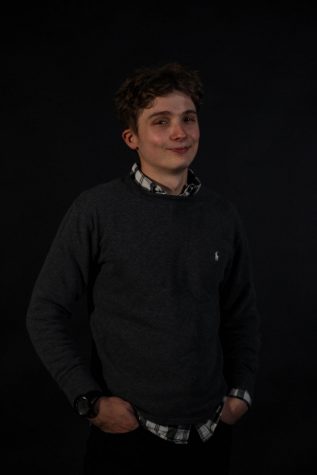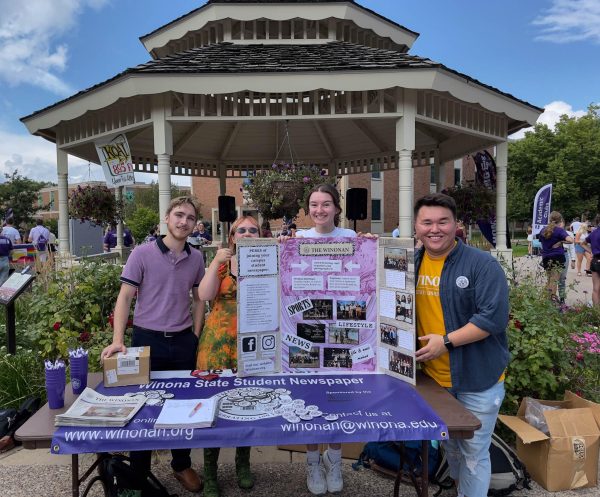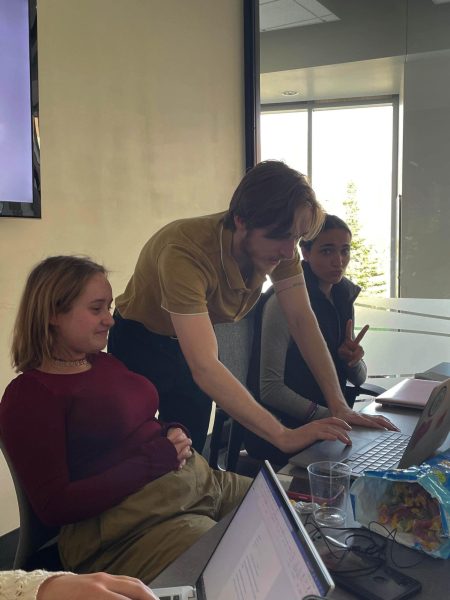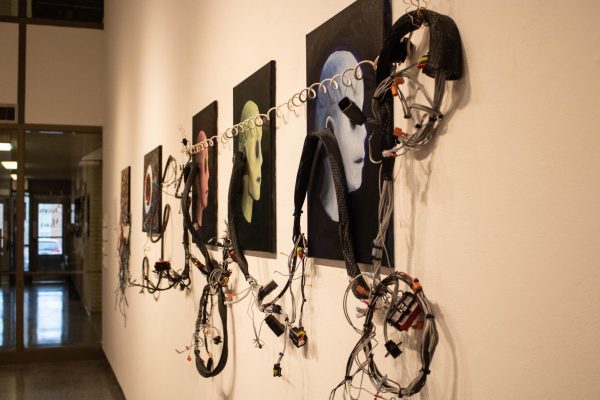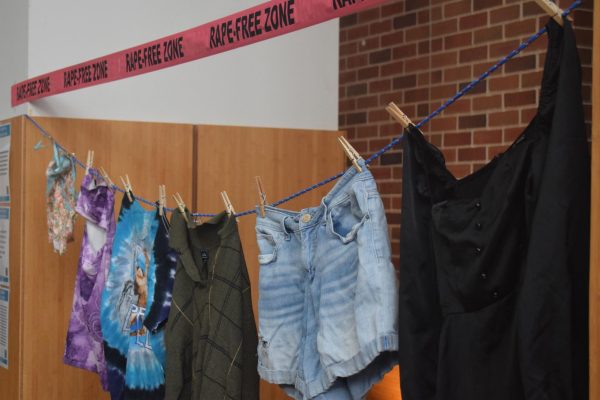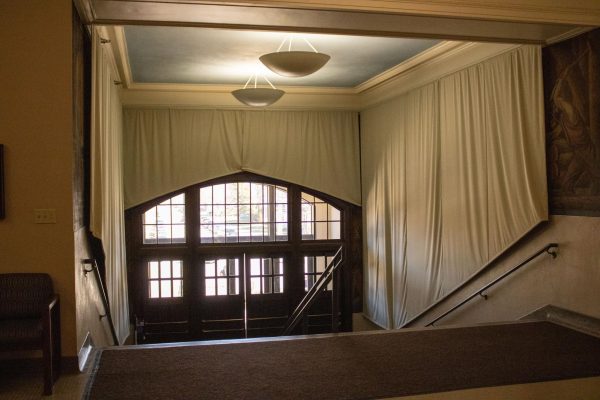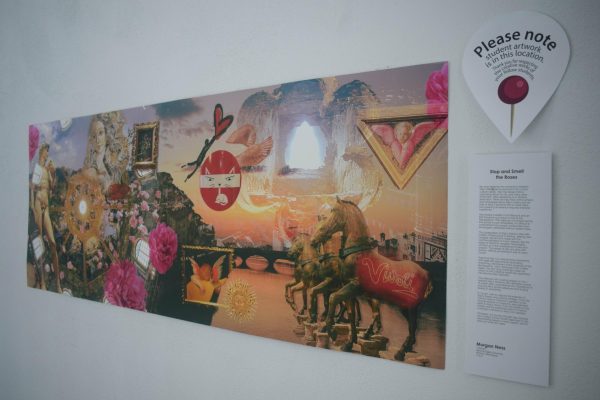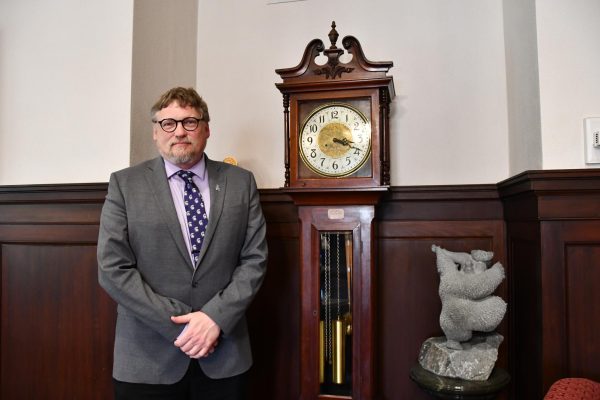Mass communication welcomes new professor
February 3, 2021
Winona State University welcomes Patrick Lichty as a new mass communication professor.
Lichty is a digital artist, activist, writer, researcher and academic. He previously taught animation at Zayed University in Dubai, United Arab Emirates.
Lichty said his road to education was anything but short.
“I first started out as an electrical engineer. Then about ten years into that, I quit and basically started a design studio and contemporary art studio,” Lichty said. “And to be perfectly honest, that went about 15 years until really the graphic design market took a hit in the early 2000s. And I went back to graduate school, and became an academic.”
Lichty earned his master’s degree in digital art from Bowling Green University in Ohio, an alma mater he shares with fellow mass communication professor Davin Heckman.
He said this teaching role has supplanted his other previous roles.
“I’ve been an academic for about the last 15 year. At first really I was looking at academia as something to kind of support my contemporary art and design practice,” Lichty said. “But the thing is that as time has gone on, I’ve really fallen in love much more with education. And I’ve really considered myself an educator, probably foremost at this point. “
Lichty was hired by a search committee headed up by Talan Memmott, assistant professor of creative digital media (CDM) for the mass communication department.
Memmott said Lichty had the unique combination of skills the department was looking for.
“It’s pretty hard to find someone that can do video production, interaction design, interactive environments, media history and theory and all as one person,” Memmott said. “So, it’s a really challenging search.”
Memmott said he wanted to push the creative digital media department and major forward.
“Part of my agenda since I got here was really elevating what CDM did and making it a little more experimental and exciting and engaging,“ Memmott said.
Lichty echoed this excitement for the future of CDM at Winona State.
“I’m looking forward to building a student community around the creative digital media program and hope that we will be doing some really interesting stuff.”
Lichty said he most recently worked on a media art project on lockdown in Abu Dhabi, United Arab Emirates.
“I found actually there was an app called display.land that allowed me to do 3D scans of the environment around me. And I just started doing it out of sheer boredom, because I was just going nuts,” Lichty said. “And so what was interesting about this is that I got these great glitched scans.”
This project showcases Lichty’s interests in both digital art and gallery exhibition.
“I love this idea of how mediation, taking things outside of the digital and bringing into the digital and seeing how it glitches and seeing how it falls apart and recombines. Because there’s always an error somewhere,“ Lichty said. “There’s always a glitch, and I always love seeing what happens with that and seeing how things trans mutate as they go into the mediated landscape.”
Lichty said his project titled: Confinement Spaces will be exhibited in an online gallery in the upcoming months.
“It’s actually going to go online with a gallery called the nation 2.0. probably within the next month. It’s 12 spaces that you can access on the web using VR,” Lichty said. “You can go through all these kinds of fractured landscape I scanned and just kind of look at, you know, these areas that I called confinement spaces”
According to the website evolving.art; “by embracing the digital format of the platform, artists are able to produce flexible, dynamic and interactive experiences that challenge preconceived notions of traditional exhibition space.”
In addition to digital art, Lichty also engaged in digital activism on the early web.
Lichty detailed his involvement with the group the Yes Men, formerly known as RTmark.
“We were called RTMark from about 1996 to 2000 until we did a fake website called gatt.org, which was kind of a spoof of the World Trade Organization, which then rose to the kind of corporate hucksters called the Yes Men,” Lichty said.
The Yes Men used digital impersonation and hoaxes in various methods to raise awareness of corporate misbehavior and social issues, documented in several films that Lichty, provided animation for.
Lichty said the Yes Men parody the dark underside of corporate culture.
“We had a little campaign where we were representing Dow Chemical for a couple of different things. We had a series of interventions that were based around the 20th anniversary of the accident in Bhopal, where Dow-Carbide emitted a huge cloud of gas, killing and injuring thousands of Indians,” Lichty said “[Dow-Carbide] said, well, you know what, $500 a person is enough for them. [The Yes Men] disagreed. So, we brought out this project called dowethics.com.”
Using the platform of dowethics.com to gain access, The Yes Men made announcements impersonating Dow Chemical.
“We announced on the 20th anniversary that we, as “Dow Chemical” were selling Union Carbide for $12 billion and giving that back to the people of Bhopal, which the BBC World bought,” Lichty said. “We were on the air for a couple of hours and then went back home and then the phone calls started.”
The film The Yes Men Fix the World documented the impacts; the hoax interview wiped over “2 billion dollars off Dow’s share price in 23 minutes.”
Lichty detailed another spoof The Yes Men created using dowethics.com, featuring Gilda the golden skeleton, a macabre representation of the value of human life.
“You could go online, and you could say, OK, what’s the profit, what’s the loss? What’s the possible loss of life and that sort of thing,” Lichty said. “Really, what it suggested is the idea of looking at the loss of a corporate action, the potential loss of life, potential loss of profit and the potential loss of popular sentiment.”
Lichty and the other Yes Men were shocked by the corporate reaction to this grim calculation.
“This was a hard self-assessment at how corporations assess themselves as stewards of the world. We took this to a trade conference and people actually asked whether they could buy this. The thing is, whether they wanted to have licenses to a sort of program that somehow did a calculus of the loss of life for profit was utterly shocking to us.”
Lichty described the intention of the pranks of the Yes Men.
“I think what happens is that we, as human beings, are at a place in time in which we are really kind of the masters of our own fate,” Lichty said. “We have to really be intentional about our purposes. And you know, how we’re going to treat one another as people and how we’re going to continue as a species.
Lichty said these intentions for the future were reflected in the hoaxes.
“We did a fake New York Times that we put out 10,000 copies, took it out in New York and gave it out, I think in 2009,” Lichty said. “Across the top, it said “Iraq War ends” and saying “$15 minimum wage”, all these things and so basically what happened is that we gave out the New York Times that we would like to see. “
Lichty said these fake acts draw attention to real problems.
“So really what’s going on here is that as opposed to creating fake news; we, number one, mean to be found out. And then secondly, the thing is, the people who we are having the good-natured joke against or maybe pointed joking with,” Lichty said. “The thing is, is that, well, if they disagree with us in the form of a lawsuit or do something like that. Well, that serves our point. So, the thing is that on one hand has said if they choose to disagree with us in one way or another, well-done. In our opinion, it proves that they are the people who we say they are.”
Lichty likened the Yes Men to jesters in a medieval court, using humor to provoke.
“These are jokes that speak to power and the thing is, is that if power doesn’t laugh along, then that begs a conversation. If you look at like medieval times, the jester, the trickster was always the person who was probably one of the most powerful people in court,” Lichty said.
Lichty also talked of his academic experience in the United Arab Emirates and the social change happening in the nation.
“I think that Arabia as a whole, is a place that understands where it is in history and it’s trying to undergo technological and social change on a generational scale,” Lichty said. “I think what’s going on here is that they want to be much more part of an international culture.
Lichty taught on a women’s only campus and described similarities between western and Emirati students.
“I think university students have this universal quality of curiosity and that’s why we’re here,” Lichty said. “And this is one of the reasons why I love being an academic.”
Lichty, an Ohio native, said he is no stranger to Minnesota.
“In the early 1990s, I lived in the Twin Cities for a few years. So, but that goes saying I’m not a stranger to the area. and then after that, five years in the UAE, in various states, Sharjah, Dubai and Abu Dhabi. And then I’m back to being in Minnesota.”
Lichty said he looks forward to several of Minnesota’s characteristics.
“I think that Minnesota nice is still in full effect. In full effect, the welcome that I’ve had from my colleagues, that sort of thing has been fantastic,“ Lichty said. “I’m looking forward to being in a place that’s green again, I’m looking forward to being on the lake. I’m looking forward to being on the river. You know, the cheese is always here.”
Lichty currently teaches print and web production, mass media history and a portfolio course for the mass communication department.
Lichty said humor is a continuity in his life, from The Yes Men to his classes.
“I think that really one of the greatest forms of communication that we can share with each other is having, you know, is laughter,: Lichty said. “I think that as an academic, I’m very serious about my scholarship. I’m very serious about my intellectual life. But also on the other hand, I think that, you know, I can take myself in a way that I can be serious while not always taking myself 100% seriously.”























































